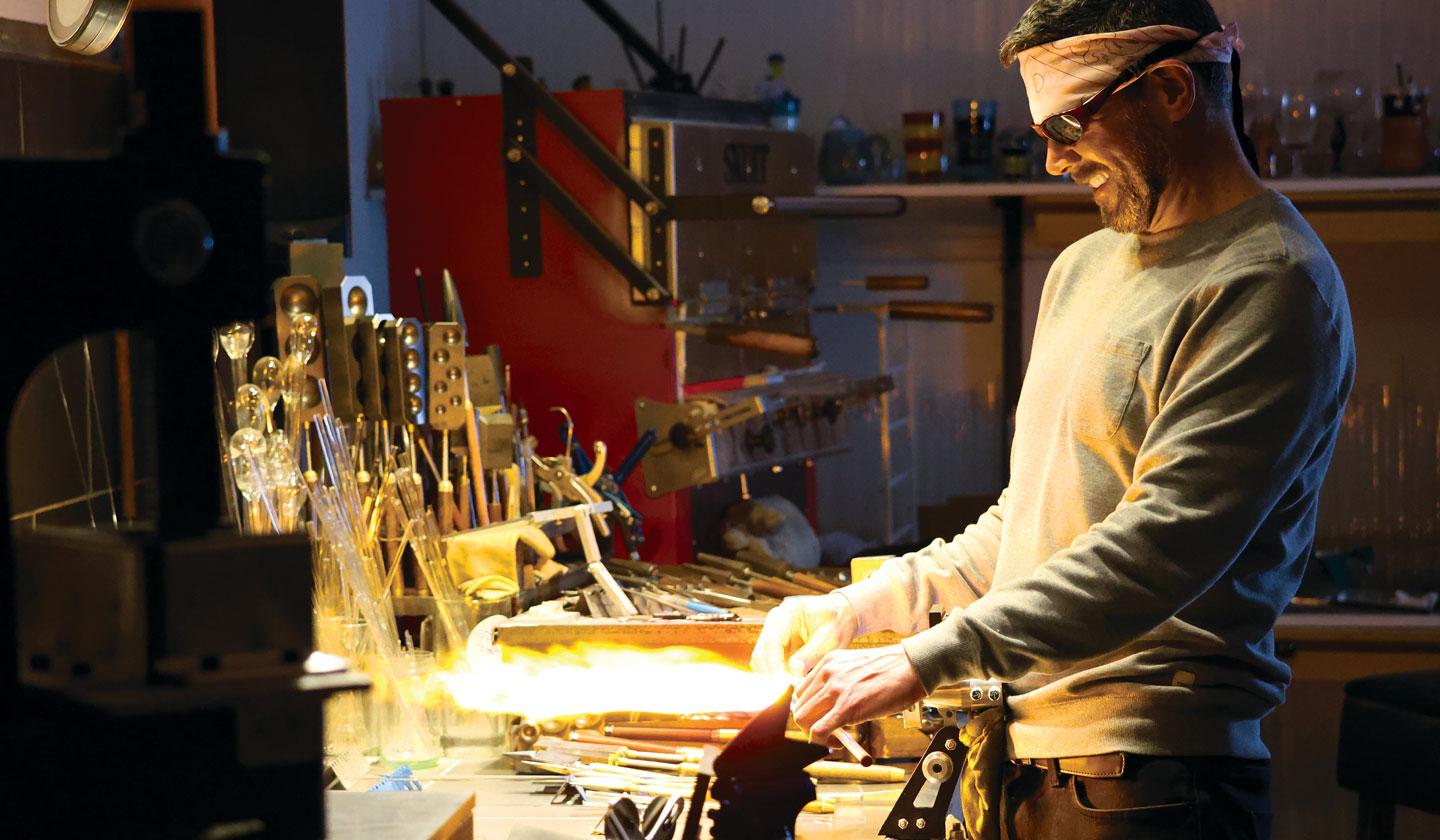
Artist Statement
My journey began in the rich soil of Southern Oregon, where I learned the values of patience and dedication while helping my grandparents tend their garden. These early lessons would later shape my career as an artist.
I discovered glassblowing in 1997. Back then, learning the craft was a different game entirely. There was no social media or YouTube. I learned the old-fashioned way—by doing, failing, and doing again. Trial and error became my teacher, and that’s where my work ethic really paid off. After a couple of years of burning the midnight oil, I finally reached a point where I could sell enough of my work to support my glass habit and say goodbye to my day job.
Looking back over two decades, I’ve witnessed flameworking evolve from a niche craft into a thriving industry. Even after all this time, I still wake up every day eager to see what comes out of the kiln. Each piece is blown with borosilicate glass, which is harder and more scratch-resistant than common glass, meaning your work of art will last a lifetime.
Recently, after the devastating loss of a dear friend, I had the opportunity to use some of the cremains to create “memorial marbles” which were given away at his celebration of life. The response was overwhelming. The profound impact of these keepsakes on those who received them revealed a new dimension to my work—one with deeper meaning and purpose.
Flameworking with Borosilicate Glass
Many glassblowers work with soda-lime glass which has a lower melting temperature and higher elasticity. Soft glass is commonly used in bead making, decorative glasswork, and Venetian glass techniques. Flameworking refers to a specific aspect of the glassblowing craft, in which the glass is heated using an open flame torch This process allows for greater attention to detail on a much smaller scale.
Borosilicate glass is more shock resistant, scratch resistant and “harder” than soda-lime glass. In your kitchen, it’s used for oven-safe glassware and stovetop cookware. Lighting fixtures are also made from borosilicate glass because of its optical properties. Borosilicate glass comes from naturally abundant materials. It is non-toxic and free from harmful chemicals like BPA, lead, or phthalates.
FUN FACT
Borosilicate glass is used to immobilize radioactive nuclear waste because of its chemical durability and thermal stability. It’s really strong stuff!
